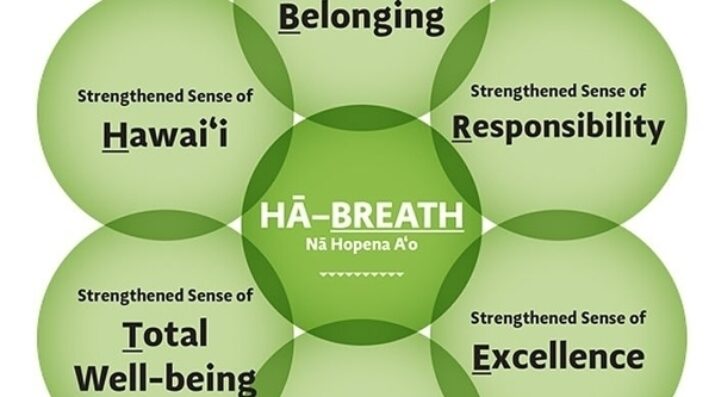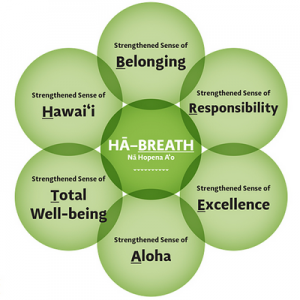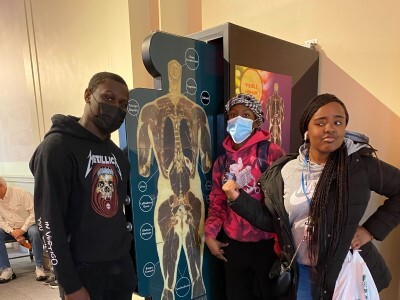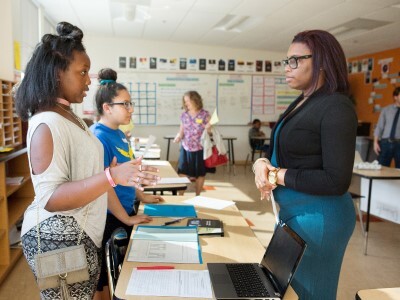Reimagining Assessment
Culturally Responsive Assessment Practices through Nā Hopena Aʻo (HĀ)
Topics

Educators are rethinking the purposes, forms, and nature of assessment. Beyond testing mastery of traditional content knowledge—an essential task, but not nearly sufficient—educators are designing assessment for learning as an integral part of the learning process.
The Hawai'i DOE Office of Hawaiian Education is piloting a proficiency-based assessment model that is culturally responsive and place-based.
Responding to a need for culturally responsive and place-based educational frameworks, the Hawaiʻi DOE's Office of Hawaiian Education is piloting a proficiency-based pathway to prepare students for college, career, and community in Hawaiʻi and beyond. Funded by an Assessment for Learning Project (ALP) grant, this new assessment model holds the optimal conditions for strengthening HĀ, a set of interdependent learning outcomes for use throughout the K-12 public education system in the state. These outcomes are based in:
- Place: Connections to place
- Performance: Dutiful performance of tasks
- Proficiency: Skillful completion of tasks
- Partnering: Collaborative effort
- Practices: Individual and group expressions
- Process: Honoring of Hawai'i
Hawaiʻi offers a rich context for learning about culturally responsive education and aims to support communities that also face widening opportunity gaps among their student populations, particularly those who have experienced historical marginalization.
The culturally and linguistically diverse student population of Hawaiʻi reflects a complex and layered history of immigration. Native Hawaiian and part-Hawaiian indigenous students comprise the largest ethnic group in the state's K-12 schools at 28 percent. Hawaiʻi also has the largest population of Asian/Pacific Islander elementary and secondary school students in the nation. Among Hawaii's public school students, 51 percent are eligible for free or reduced-price lunch, and 7 percent are English-language learners. For these reasons, the state presents a relevant context for exploring culturally responsive assessment, and its students serve as potential beneficiaries of the valuable data the project can provide about their learning contexts. The HĀ Assessment model provides a unique opportunity for assessing shared experiences of HĀ to broaden and deepen these experiences for more learners.
Na Hopena Aʻo (HĀ)
The catalyst for participation in the Assessment for Learning Project was the unanimous approval of a set of interdependent learning outcomes for use throughout the K-12 public education system. Approved by the state of Hawaiʻi board of education (BOE) in 2015, these outcomes, entitled Nā Hopena A'o or HĀ, are uniquely grounded in Hawaiian values, language, culture, and history. They are six outcomes that include a sense of Belonging, Responsibility, Excellence, Aloha, Total Wellbeing, and Hawaiʻi. HĀ supports a holistic learning process with universal appeal and application to guide learners and leaders in the entire school community.

With a foundation in Hawaiian values, language, culture, and history, HĀ reflects the uniqueness of Hawaiʻi and is meaningful in all places of learning. As a broad set of learning outcomes, HĀ also reflects competencies that equate to college, career, and community readiness. Through this framework, Hawaiʻi can prototype a proficiency-based advancement pathway using standards of academic achievement alongside socio-emotional progress and character development. For the first time, the Hawaiʻi DOE has strategically aligned practice and policy in collaboration with schools and communities.
Culturally Responsive Assessment and Methodologies
Scholars and practitioners have been developing and refining culturally responsive (Gay, 2002; 2010; 2013) and culturally relevant (Ladson-Billings, 1995) pedagogical practices over several decades. These efforts have led to an increased awareness of the need for inclusive and responsive classrooms; however, researchers offer that there is still much work to be done. This is particularly evident in educational settings characterized by increased standardization, contexts that make responsive teaching and learning difficult for teachers to implement (Skerrett & Hargreaves, 2008; Sleeter, 2012).
The creators of the assessment project also recognize that culture is an important factor in curriculum, instruction, administration, and assessment. Current research and assessment methodology employ dominant, often Western paradigms that are often incongruent with indigenous/native worldviews. Though data collected using such methodology can have value, the worthiness of the conclusions drawn from them are often incompatible with indigenous paradigms. In Decolonizing Methodologies, Linda Tuhiwai Smith (1999) argues that if research and assessment are to be of worth to indigenous communities, the methods used to develop and deliver them must be decolonized so that the tools, data collection, analysis, and reporting of conclusions coincide with native systems. The HĀ Assessment for Learning Project employs decolonizing methods of inquiry in order to create responsive tools for assessing educational contexts.
HĀ Assessment for Learning Project
The purpose of the HĀ Assessment for Learning project is to identify the key conditions and indicators for success along an educational pathway that supports community, college, and career readiness. At the completion of the two-year pilot, the DOE will have its first valid and culturally responsive framework for the Nā Hopena A'o (HĀ) outcomes. This presents an opportunity to inform and shape future accountability practices in accordance with our state's strategic priorities and the Every Student Succeeds Act (ESSA).
Project team members will convene and listen for mo'olelo (generative storytelling) as told by students, teachers, families, principals, administrators, kūpuna (elders), and community members. It is their collective stories that allow for an inclusive assessment model to emerge that is representative of actual experience and wisdom. Pilot sites have been targeted at school, complex, district, and state levels so that the cycle of design, test, learn, and repeat can take place in multiple learning environments.
In the same way we are planning assessments from a Hawaiian context, the ALP team sees indigenous ways of teaching to follow. For example, we see growing use of mo'olelo and mo'okū'auhau (genealogy) as fundamental instructional practice and 'āina (native land) serving as teacher, classroom, and indicator of success through the reciprocal process of being served by schools and communities.




